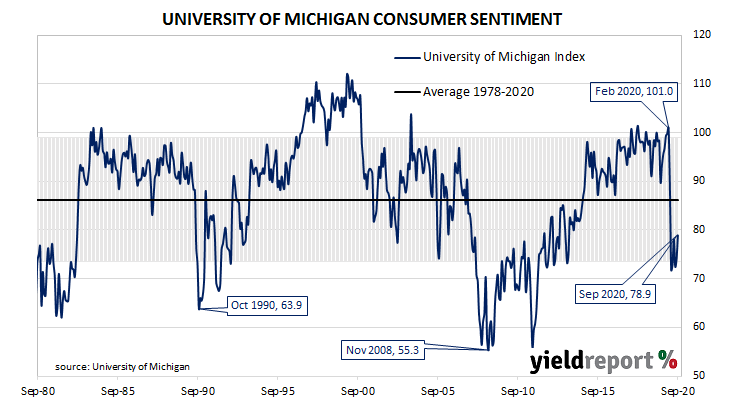Summary: US consumer confidence up in September; index at highest reading since April low; presidential election beginning to impact expectations; vaccination timetable also a factor in coming months.
US consumer confidence started 2020 at an elevated level. However, by March, surveys had begun to reflect a growing uneasiness with the global spread of COVID-19 and its reach into the US. After a plunge in April, US household confidence began to recover, albeit in a haphazard fashion.
The latest survey conducted by the University of Michigan indicates the average confidence level of US households improved modestly to a somewhat-depressed level in September. The University’s preliminary reading from its Index of Consumer Sentiment registered 78.9, more than the generally expected figure of 75 and higher than August’s final figure of 74.1.
“Consumer sentiment improved in early September, reaching the top of the range it has travelled since April. While the recent gain was consistent with an unchanged flat trend, the data indicated that the election has begun to have an impact on expectations about future economic prospects,” said the University’s Surveys of Consumers chief economist, Richard Curtin.

US Treasury bond yields crept up uniformly along the curve. By the end of the day; US 2-year, 10-year and 30-year Treasury yields had all inched up 1bps to 0.14%, 0.70% and 1.45% respectively.
Curtin said the outcome of the US presidential election and the timetable for vaccinations are two factors he foresees as potential factors in dramatically reducing consumer confidence in coming months. However, he also added “the hardships endured by consumers can only be offset by renewed federal relief payments.”

